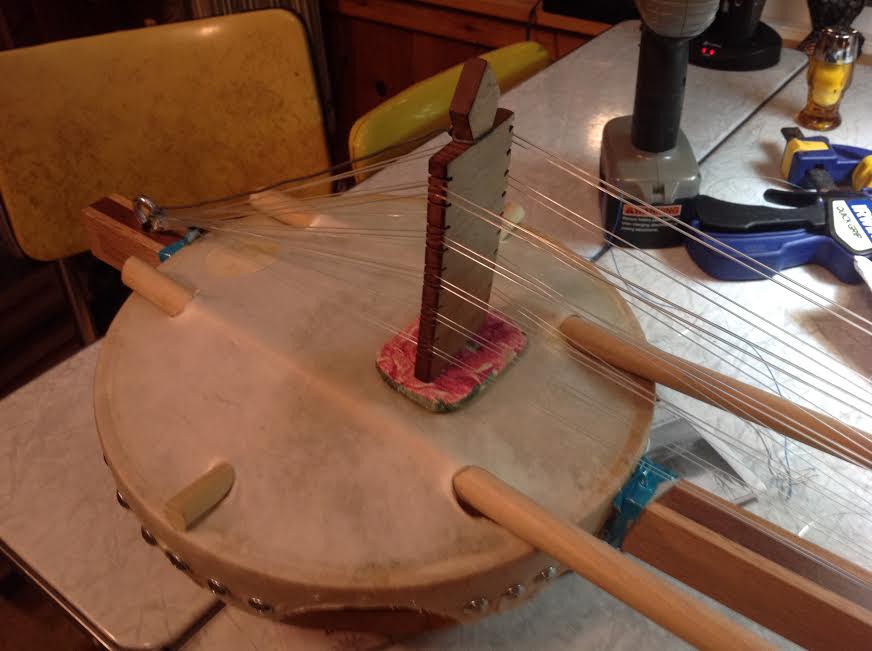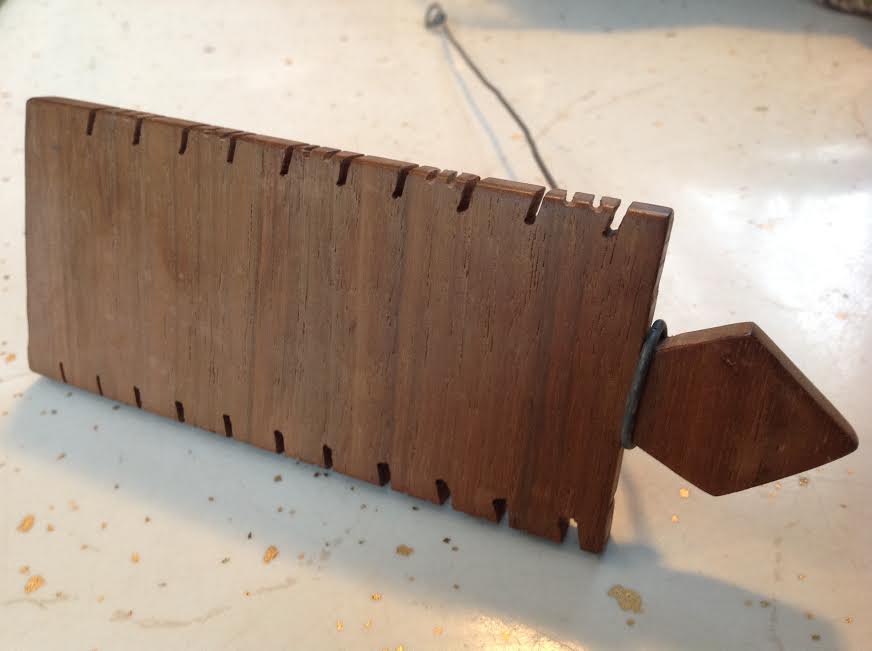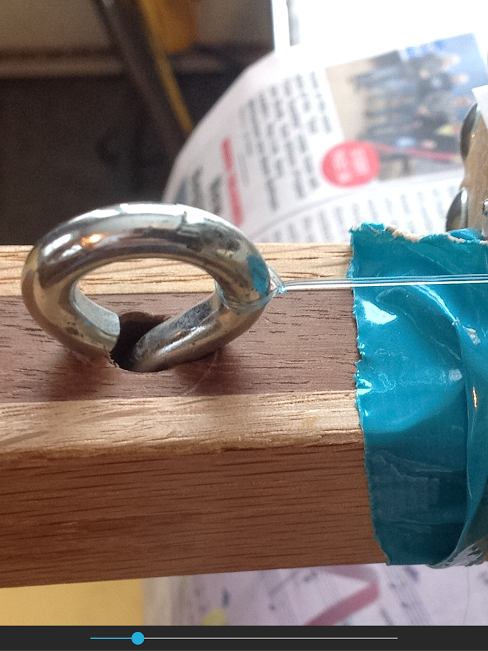
Here's a very short, unlisted youtube video showing how the thing sounds. Obviously not at all a performance but just a quick sound sample:Click here to view
I got to thinking ------ as the much as I dearly love the Kora & as much as I've quite seriously tried to learn how to play it for over three decades, I'd not feel comfortable performing my handful of kora tunes in public. Now, at age 68, I realize all the more clearly that I'll likely never be much of a Kora player. Truth be known, I spend a lot more time diddling with making instruments than I do playing them. In the past I've built several Malian N'gonis as well as the closely related Goni from Burkina Faso. Their pentatonic, no-wrong-notes scale makes them leagues easier to play than the Kora, which, being chromatically tuned, has the potential for lots of "wrong notes" (in my hands at least!). With this in mind, I figured that it'd be fun to build an experimental ten-course N'goni with each note doubled (two same-pitched strings instead of the usual single string). Sorta like the difference between a regular six-string guitar vs a 12-string guitar - adds harmonics & interesting beat-notes. What I did was to take one of the bunch of Koras I've built, a simple rather small-bodied one, & converted it into a doubled-string, ten course N'goni while retaining the Kora configuration & appearance: hand-grips, bridge, bridge stabilization, skin bracing system etc - thus the silly name, N'kora. It plays exactly like a conventional N'goni * - just with doubled strings. This conversion was a pleasant one weekend project.

Only a few things needed to be done: I had guitar tuners on this Kora (my all-tme favorites, $2 each, model GTM-21 from elderly.com) (I've used well over a thousand over the years without a single failure). The tuner's placement along the neck had to be changed (see photos). Using the existing tuner shaft holes & string-access holes in the neck, I took off all the tuners & mounted them in ten groups of two (see photos). Because some of the previous Kora's string exit holes were on the "wrong side" of the neck surface for this conversion, I installed small-headed finishing nails near the strings exit to re-route the "out-of-place" strings, so that both strings of each set came away from their exit in the same vertical plane. Hard to talk about but easy to understand & do with the neck in front of you. Do this relocation AS you string the thing - for more accurate alignment. Initially intending to make a new bridge, it worked out quite nicely just to saw ten new double notches in the existing bridge. I made these notches shallower than the existing Kora notches, not wanting to weaken & possibly break that part of the bridge. A spacing of 1/8 inches (at the bridge) between the two strings in each set worked out nicely. Need not worry about this spacing at the other end as it happens automatically, one string of a set exiting higher up the neck. The rest is simply stringing it up, tune it, fix any buzz & play. *Well, not quite exactly exactly. Largely because I had one "left-over " tuning peg on the converted instrument that was begging to be used, thought I'd make a single-string "bass" note - running from the vacant tuner at the neck's far end, centered down the middle of the neck, then going through a small hole drilled in the bridge's "diamond" to the tie-off ring. It doesn't interfere at all with playing the main strings. This low drone worked out great! Much fun to hit. I like it.
Click here
Click here
Click here
Click here
Click here
Click here to access
my webpage



String gauges.
As much as possible I used monofilament fishline of the same
gauge/length as would be used on a conventional N'goni:
One nice thing - unlike a conventional N'goni or Kora, where you
must tie the end of each string to the tailpiece ring, all you
need do here is to cut a length of monofilament fishline twice as
long, bend in half & simply loop it through the ring as show in
the photo.
On the outside chance that you don't happen to have a spare Kora
laying around to convert, you could throw together a Kora from my
webpage (way easier to build than you'd think) & simply incorporate
the above N'kora conversion instructions as you are building it.
See these articles for ideas:
This chart show both the tuning and the string gauge, in thousandths
of an inch.Looking at the bridge from the tailpiece end of the N-kora:
D .050
F .036 D .036 (lowest notes)
A .029 G .029
D .024 C .024
G .020 F .020
B .018 A .018 (highest notes)
These two illustraations are added here on the fly - just to
get the information out. I'll do it right shortly:


February 8, 2016
Dennis Havlena - W8MI
Straits of Mackinac,
northern Michigan
dhavlena@gmail.com
http://www.DennisHavlena.com
Keywords ngoni n'goni goni kora nkora n'kora diy convert conversion havlena dhavlena dennis
how to cheboygan mackinac mackinaw make dennishavlena dennishavlena.com